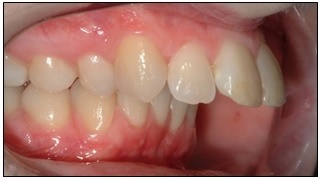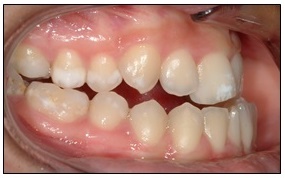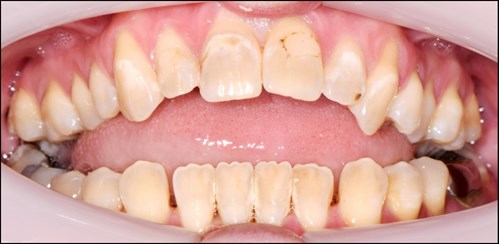Glossary
Class II bite
This classification of bite is used to describe the top teeth
being ahead of the lower teeth. It can be due to the position
of the teeth themselves or the jaws in relation to each other or
both

Class III bite
This classification is used to describe the top teeth being too
far back in relation to the lower teeth. It can be due to the
position of the teeth or the jaws in relation to each other or
both

Anterior Open Bite
This type of bite is where there is a gap between the top
and bottom front teeth even though teeth at the back are biting
together (see photo below).

Genioplasty
Chin Surgery which involves the making the chin bigger or
smaller. Mot commonly it is used for improve a small
(retrusive) or chin by dividing the lower front part of the chin
and moving it forward and then securing it with plates. Your
surgeon will decide if this is needed.
Orthognathic Treatment
(Pronounced: or·thog·nath·ic.)
Corrective jaw treatment - (Ortho to straighten, gnathia
meaning jaw in Latin) - uses orthodontic appliances (braces) and
surgery to reposition either one or both jaws.
Osteotomy
The surgical cutting of a bone, to allowed it to be moved.
Bi-Maxillary Osteotomy
This involves both jaws and your stay in hospital will be longer
than the single jaw procedure. The incisions are the same as
described above for the single jaw operations.
Le Fort 1 Osteotomy
This type of osteotomy involves the upper jaw (maxilla).
Maxilla
The upper jaw bone
Mandible
The lower jaw bone
Relapse
Any change in tooth position or bite following the removal of
the braces. Can be caused by
1) the natural 'recovery'; i.e. the teeth wanting to move back
to the original position
2) the natural ageing process
3) Failure to wear retainers